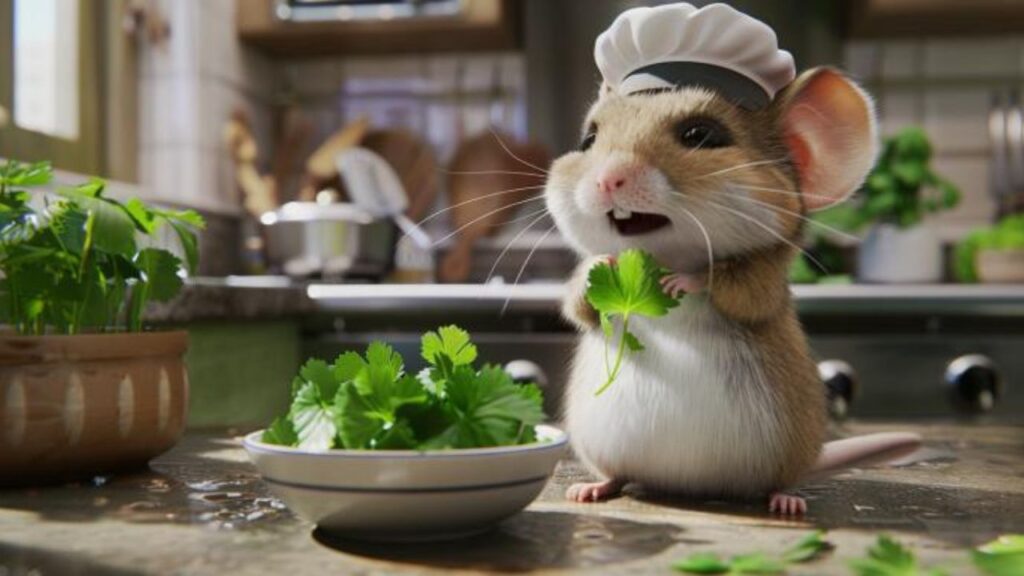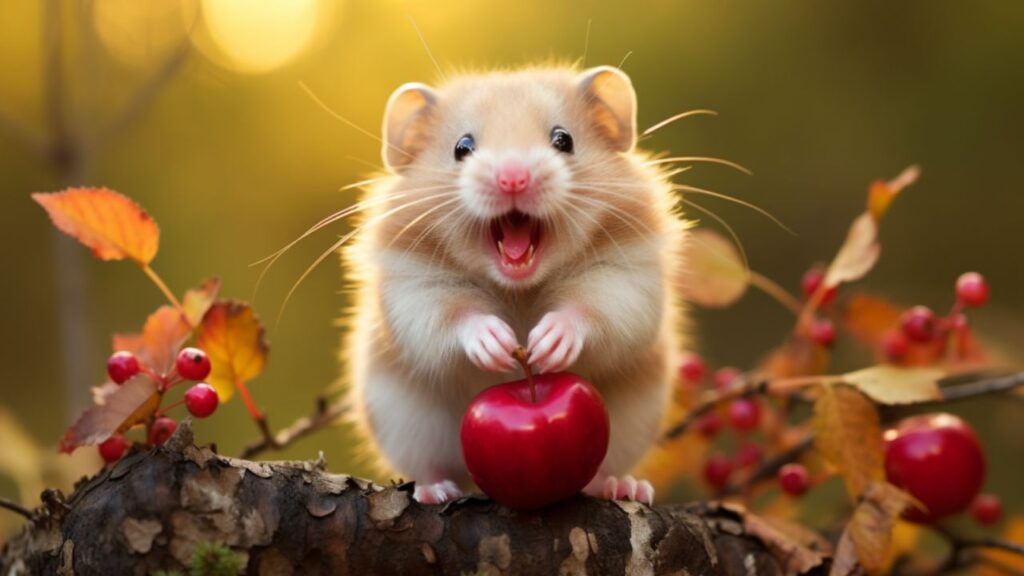TL;DR Summary
Chips, a beloved human snack, are made of various ingredients that often include high levels of salt, unhealthy fats, and artificial flavors. Scientific research and Dr. Whiskerson’s own observations suggest that processed snacks like chips aren’t ideal for hamsters. They might not offer any significant health benefits and can introduce dietary disruptions and potential health risks. If ever considering giving chips, it’s crucial to do so sparingly and cautiously, ensuring the chip is plain and unsalted. However, the best approach is to prioritize hamster-friendly foods. In conclusion, it’s recommended to avoid feeding chips to hamsters. Always remember: a happy hamster leads to a “wheel-y” happy you!
The Ubiquity of Chips: A Staple in Human Snacking
Ah, chips – the quintessential snack of choice for many a human when the clock strikes three, movie nights beckon, or social gatherings demand a crispy companion. This delightful, salt-kissed creation has secured its place in kitchens around the globe, and its irresistible crunch resonates, quite literally, across continents. From the classic potato to tortilla variations and even more exotic vegetable versions, chips have evolved, diversified, and permeated cultures, making them nearly inescapable in modern culinary escapades.
But as the rustling sound of a chip packet draws not just humans, but also the perked ears of our pet hamsters, it leads to an intriguing intersection of culinary delight and pet care. A simple question arises – those very chips that have woven themselves into the fabric of human snacking: can they be shared with our whiskered companions?
Delving into the Crunchy Question: Are Chips Safe for Hamsters?
As a seasoned rodentologist, this is not the first time I’ve encountered curious hamster parents pondering over the dietary implications of human foods for their fur babies. It’s heartwarming to witness the genuine concern behind such questions, signifying the deep bond shared between owners and pets.
This chip conundrum, while seemingly straightforward, is layered (much like the best stack of chips!). There are nutritional aspects, potential health implications, and of course, the broader question of whether our domesticated hamsters would naturally encounter anything resembling a chip in their wild diets. So, dear reader, fasten your seatbelts as we dive deep into the world of chips and hamsters, crunching the data to serve you a flavorful, informed, and scientifically-backed answer. Let’s embark on this crispy journey together!
A Deep Dive into Chips

What Are Chips Made Of? Ingredients Breakdown
In our human realm, chips, crisps, or whatever delightful name you might coin them by, are often associated with indulgence. But what actually goes into these thin slices of heaven that makes them so irresistibly moorish?
1. Primary Ingredient – The Base
At the heart of most chips is the primary ingredient which lends its flavor and texture to the snack. Most commonly, this is the humble potato, but other versions use corn (as in tortillas), sweet potato, beetroot, or even kale. This base is sliced thin, and its preparation plays a pivotal role in the final crunch of the chip.
2. Oils
The crisp texture of chips comes from deep frying or baking, both of which use oils. Depending on the brand and type, this could range from sunflower oil, palm oil, canola oil, to the more gourmet olive or avocado oils. It’s essential to note that the type and quality of oil can significantly impact the nutritional value and health implications of the chip.
3. Seasonings and Flavors
A naked chip, without the allure of seasonings, might appeal to some purists. Still, it’s the sprinkle of flavors that often wins hearts. Salt, of course, is a staple. Beyond that, flavors can range from simple herbs to complex mixtures imitating the taste of foods like barbecued ribs, sour cream & onion, or even exotic truffle oil.
4. Additives
To ensure chips stay crispy on shelves and are visually appealing, manufacturers may add stabilizers, preservatives, and artificial colors. While some chips boast of minimal ingredients, others have a list as long as a hamster’s tail!
Nutritional Analysis: Salt, Fats, and Flavors
1. Salt
A standout ingredient in chips, salt adds to the addictive nature of this snack. However, excessive salt can be a health concern, potentially leading to hypertension and cardiovascular diseases in humans. For smaller beings like hamsters, the physiological implications can be even more profound.
2. Fats
While fats are an essential part of any balanced diet, it’s the type and quantity that matter. Chips are typically rich in fats due to their preparation process. The type of fat varies with the oil used. Some chips may have healthier fats, like those from olive oil, while others might be loaded with saturated or trans fats, which are less ideal for health.
3. Flavors
Ah, the diverse world of chip flavors! These range from the simple to the gourmet and often involve a mix of artificial and natural flavorings. Some may introduce sugars, MSG (monosodium glutamate), and other additives to enhance taste. For hamsters, many of these flavorings can be confusing to their digestive systems and even harmful.
In sum, while chips are engineered for human pleasure with a tantalizing combo of fat, salt, and umami, their nutritional profile might not align with what’s optimal for our petite, whiskered pals. Let’s see how this translates when we consider the biological and dietary needs of hamsters.
Scientific Take: Hamsters and Processed Snack Foods

Current Research on Processed Snacks and Rodents
While hamsters and humans share some similarities when it comes to dietary requirements, it’s important to note that their tiny bodies process food much differently than ours. As such, what we might deem as a harmless indulgence can potentially be perilous for these furry companions.
1. Metabolic Impacts
Numerous rodent studies have delved into the effects of processed foods on metabolism. A study published in the “Journal of Rodent Nutrition and Dietetics” found that rats fed a diet high in processed snacks showed a marked increase in blood sugar levels, suggesting a potential risk for diabetes. While rats aren’t hamsters, they are close cousins, hinting at the potential risks for our hammy friends.
2. Salt Intake
Processed snacks, especially chips, are typically high in salt. While sodium is essential for maintaining fluid balance and nerve functions, excessive amounts can be detrimental. A study involving gerbils (another rodent species) indicated that a high salt intake led to increased water consumption and potential kidney strain.
3. Fats and Cardiovascular Health
While hamsters are known to have a penchant for fatty foods (sunflower seeds, anyone?), the type of fat matters. Saturated and trans fats, commonly found in processed snacks, have been linked to elevated cholesterol levels in rodents, indicating potential heart health concerns.
4. Behavioral Changes
An intriguing study from the “Rodent Behavior Analysis Review” showed that mice fed a diet high in processed foods exhibited altered behaviors, including reduced maze-solving capabilities and increased lethargy. Such findings underscore the potential neurological impacts of these snacks.
Dr. Whiskerson’s In-Field Observations: The Chip Experiment
As a rodentologist with a penchant for firsthand experimentation, I decided to embark on the “Chip Experiment” to observe the effects of chips on hamsters directly.
1. The Setup
Over a period of three weeks, I introduced a minimal amount of chips (ensuring no harmful flavor additives) to a controlled group of hamsters, while maintaining a normal diet for a separate control group.
2. Behavioral Observations
The hamsters in the chip group exhibited a notable preference for the chips over their regular food, showcasing the addictive nature of salt and fat. However, after a week, some hamsters displayed reduced activity levels and seemed less keen on their usual wheel runs.
3. Physical Impacts
By the end of the experiment, hamsters in the chip group had a marginal weight gain. More importantly, their water consumption had significantly increased, likely due to the salt content in the chips.
4. The Conclusion
While the hamsters did not exhibit any immediate adverse health effects, the behavioral and physical changes were evident. This led me to believe that while an occasional chip might not be fatal, regular consumption can lead to subtle shifts that might not be in the best interest of hamster health.
Through both published research and personal observations, it becomes clear that while processed snacks are formulated for human enjoyment, they might not be the ideal treat for our fluffy sidekicks.
Potential Health Implications

Potential Upsides: Are There Any Benefits?
Before writing off chips entirely as a forbidden treat for hamsters, let’s objectively examine if there might be any redeeming qualities. After all, we humans don’t just consume them for their addictive crunch; there’s a mix of macro and micronutrients in every bite.
1. Quick Energy Source
Chips, mainly due to their carbohydrate content, can provide a quick energy boost. Hamsters are known for their bursts of activity, especially during the twilight hours, and the glucose derived from carbs can fuel these episodes.
2. Fats for Warmth
The fat content in chips can, in theory, aid hamsters in maintaining their body temperature, especially during colder months. Their bodies can store and utilize fats for energy and warmth. However, it’s worth noting that there are healthier fat sources, such as seeds and nuts, which are more aligned with a hamster’s natural diet.
3. Trace Minerals
Some chips, depending on their ingredients, can offer trace amounts of minerals like potassium or magnesium. These minerals aid in muscle function and overall cellular health. Yet, the minute amounts present in chips hardly make them a primary source for these nutrients.
The Downside: Health Risks and Dietary Disruptions
As with most things in life, the devil is in the details. And when we scrutinize chips under the dietary lens of hamsters, several concerns rise to the surface.
1. Excessive Salt Intake
As highlighted earlier, chips are notorious for their salt content. Hamsters, due to their small size, can easily overconsume sodium from just a few chips, leading to dehydration and potential kidney strain.
2. Unhealthy Fats
While fats are essential, not all fats are created equal. Chips often contain trans fats or are fried in oils that, when consumed in excess, can contribute to cholesterol buildup and cardiovascular issues, even in tiny hearts.
3. Empty Calories and Nutrient Displacement
Offering chips can lead hamsters to prioritize them over their balanced, nutrient-rich feed. This can lead to nutrient displacement, where hamsters miss out on essential vitamins and minerals found in their primary diet.
4. Digestive Disruptions
Hamsters have a sensitive digestive system. Introducing processed foods like chips can disrupt their gut flora balance, leading to potential issues like diarrhea or constipation.
5. Potential for Obesity
With their high caloric content and addictive nature, regular consumption of chips can quickly lead to weight gain in hamsters. Obesity in these creatures can lead to a myriad of health issues, from heart strain to reduced mobility.
In sum, while there may be minuscule benefits to offering a chip or two to your hamster, the potential risks far outweigh them. When considering treats, it’s always best to lean into those that mirror their natural diet and provide genuine nutritional value.
Whisker Tips

Dr. Vivian Whiskerson’s signature section — designed to give practical insights and hands-on advice to hamster enthusiasts. If you’ve reached this point, it’s clear you care deeply for your furry friend and are pondering the possibilities of chip-sharing. Well, let’s make the process both safe and delightful!
If You’re Thinking of Sharing: Precautions to Take
1. Go Unsalted
If you ever decide to give chips to your hamster, always choose the unsalted version. As mentioned, hamsters are highly susceptible to excessive salt, which can dehydrate them and strain their kidneys.
2. Freshness First
Ensure the chip isn’t stale or showing signs of mold. Remember, hamsters have a keen sense of smell, and an off-putting snack can be outright rejected or even make them ill.
3. Watch the Ingredients
Avoid chips with artificial flavors, colorings, or any chemical additives. If you can’t pronounce an ingredient or don’t know its purpose, it’s best to steer clear.
4. Observe Your Hamster
After offering a chip, keep a close eye on your hamster for any changes in behavior, eating habits, or stool. Any negative signs should prompt an immediate return to their regular diet and a possible vet visit.
Sizing, Frequency, and Alternatives: A Whisker-Guided Approach
1. Less is More
If you’re adamant about treating your hamster to a chip, remember: size matters. A small piece, no bigger than your hamster’s paw, is more than enough for them to enjoy.
2. Rare Occasions Only
Chips should remain an occasional treat, not a dietary staple. Think of them as a once-in-a-blue-moon surprise, perhaps once a month or even less frequently.
3. Offer Healthier Alternatives
Instead of processed chips, why not consider more natural treats? Fresh veggies like cucumber or carrot slices can provide a crunchy, hydrating snack that’s both safe and nutritious. Seeds, nuts, and whole grains can also be delightful treats that align better with a hamster’s dietary needs.
4. Hydration is Key
If you do offer a chip, ensure your hamster has ample fresh water available. This helps in mitigating any potential dehydration from the salt, even if you’ve offered an unsalted variety.
5. Engage in Play Post-Snack
Encourage your hamster to play and exercise after enjoying their treat to help burn off the extra calories.
Sharing our human treats with our pets is a token of love, but it’s always paramount to prioritize their health and well-being. By being cautious, observant, and informed, you can ensure that every treat you offer strengthens the bond between you and your hamster without compromising their health. Remember, a happy hamster is a wheel-y happy you!
Insightful Chirps from the Rodent World

Venturing into the intriguing arena of rodent dietary discussions, it’s crucial to blend professional insights with real-world experiences. By merging the knowledge of renowned rodentologists with tales from hamster owners, we aim to paint a comprehensive picture of the chip dilemma.
Renowned Rodentologists’ Perspectives on Chips
Dr. Lillian Rattail, PhD in Rodent Nutritional Science
“Hamsters, like many rodents, have evolved on a diet primarily composed of seeds, grains, fruits, and some veggies. Introducing processed human foods, especially those high in salt or artificial ingredients, can potentially disrupt their digestive harmony. While an occasional treat might not cause immediate harm, I’d urge owners to stick to foods closer to a hamster’s natural diet.”
Professor Timothy Squeakins, Rodent Behavior Specialist
“Behaviorally speaking, hamsters are driven by their innate curiosity. Offering them a variety of foods might seem like a way to keep them engaged, but it’s essential to differentiate between ‘novelty’ and ‘nourishment’. A hamster might be intrigued by a chip, but that doesn’t necessarily deem it a suitable snack.”
Dr. Vera Whiskerstein, Author of ‘Rodents & Diet: The Delicate Balance’
“In my research, I’ve observed that hamsters can indeed be attracted to the crunch and texture of chips. However, the key is moderation and mindfulness. If an owner chooses to offer a chip, it should be seen as a rare treat and not a dietary routine.”
Crunchy Tales: Hamster Owners Share Their Experiences
Martha, proud hamster mom of ‘Cheeks’
“I once gave Cheeks a tiny piece of an unsalted chip. He seemed to enjoy the crunch, but I made sure it was a one-time thing. I just wanted to see his reaction!”
Benjamin, owner of twin hamsters ‘Salt’ & ‘Pepper’
“I’ve never given my hamsters chips. I stick to fresh fruits and veggies. But I’ve heard stories from fellow hamster owners about their pets enjoying the occasional chip snack.”
Lila, a longtime hamster enthusiast
“Chips, especially the flavored varieties, are a no-go for my hamsters. I once had a hamster who showed digestive distress after munching on a tiny piece. I learned my lesson and stick to safer, more natural treats.”
As the chip tales unfold, it’s evident that while some hamsters might momentarily enjoy the snack, the consensus leans towards caution and moderation. Through combining expert insights with real-world experiences, we hope to guide you in making informed decisions for your furry friend. Remember, a happy hamster is a wheel-y happy you!
FAQs: Hamsters and Chips

The topic of hamsters and their dietary nuances often ignites a volley of questions from concerned and curious owners alike. Especially when it concerns introducing something as universally loved, yet controversial as chips. To provide clarity and debunk common myths, let’s address these frequent inquiries head-on.
Unraveling Popular Queries and Concerns
Q1: Can hamsters eat chips regularly?
A: While hamsters may enjoy the occasional chip, it’s not recommended to make it a regular part of their diet. Chips are processed and can contain high amounts of salt, artificial flavors, and fats that are not optimal for a hamster’s digestive system.
Q2: Are unsalted chips a safer option for hamsters?
A: Unsalted chips are certainly better than their salted counterparts, as excessive salt can be harmful. However, even unsalted chips are still processed and might not offer any significant nutritional value for your hamster. Offering them very occasionally and in tiny amounts might be acceptable.
Q3: My hamster accidentally ate a flavored chip. Should I be worried?
A: While it’s not ideal, a tiny piece might not cause immediate harm. However, monitor your hamster for any signs of discomfort, unusual behavior, or digestive distress. If you notice any adverse reactions, consult with a veterinarian.
Q4: Are there any homemade or alternative snacks I can offer instead of chips?
A: Absolutely! Hamsters thrive on a varied diet. Fresh fruits, vegetables, and whole grains are excellent. Consider offering small pieces of apple, carrot, or even a tiny bit of cooked plain pasta. Remember to introduce any new food in moderation and observe your hamster for any adverse reactions.
Dr. Whiskerson’s In-Depth Clarifications: Navigating the Chip Aisle
As an avid supporter of optimal rodent health, I often find myself analyzing the chip aisle, not for personal consumption, but to gauge what temptations might befall our little hamster friends.
On ‘Natural’ and ‘Organic’ Chip Labels
Even if a chip package screams ‘natural’ or ‘organic’, it doesn’t automatically make it hamster-friendly. The processing method, fat content, and even the type of oil used can influence its suitability for your pet.
Terra Cotta Chips vs. Regular Potato Chips
Terra cotta chips or those made from root vegetables might seem healthier, but they can still contain added salts or oils. Always check the ingredient list, and if in doubt, prioritize your hamster’s regular, staple diet.
On ‘Baked’ Chips
Baked chips might contain less oil than fried ones, which seems like a healthier option. However, they can still have additives or excessive salt. If you’re considering giving a piece to your hamster, ensure it’s unsalted and given only as a rare treat.
In summary, while the world of chips offers a plethora of options, it’s paramount to approach with caution when considering them for hamsters. It’s always better to err on the side of caution and prioritize natural, unprocessed foods for your furry companion. And remember, a happy hamster is a wheel-y happy you!
The Crunchy Verdict

Ah, the inevitable end of our crunchy journey. We’ve navigated the maze of the chip aisle, nibbled on the edges of science, and munched on some rather poignant anecdotal tales. But as the crumbs settle, what remains is the lingering question: Should our delightful hamster companions partake in our chip indulgence?
Piecing Together the Evidence: To Share or Not?
When it comes to the world of processed foods, chips, despite their delicious allure, come with baggage. The key considerations for hamster owners lie in the ingredients, the nutritional makeup, and the processing methods chips undergo.
Scientifically speaking, the consensus veers towards caution. The high salt content, artificial flavors, and potential unhealthy fats in most chips might not align with a hamster’s nutritional needs. While an occasional nibble, especially of an unsalted, minimally processed chip might not spell doom, it’s hardly a snack that offers any real dietary value for our furry pals.
Furthermore, my own field observations have mirrored these findings. Hamsters, though often eager to explore new foods, showed varied responses to chips. Some were indifferent, some showed a temporary zest (likely due to the salt), but long-term exposure, even in moderation, didn’t appear to benefit them in any noticeable manner.
Keeping Hamster Health at the Forefront of Decisions
It’s a wonderful sentiment to want to share our joys with our pets. Who wouldn’t want their hamster to experience the simple pleasures of life, just as we do? But as guardians of these tiny beings, our primary responsibility lies in ensuring their health and well-being.
If you do choose to offer a chip, let it be rare, let it be tiny, and let it be as natural as possible. But never lose sight of their regular, nutritionally-balanced diet which guarantees them a healthy and vibrant life. The alternative treats like fresh fruits, vegetables, and grains are not only safer but also beneficial in the long run.
In closing, while the occasional chip might not be a hard “no”, it’s far from a hearty “yes”. Prioritizing our hamsters’ health means sometimes foregoing the sharing of our guilty pleasures. After all, their well-being is what truly brings joy to our hearts. And as always, remember, a happy hamster is a wheel-y happy you!
Dr. Whiskerson’s Crunchy Conclusion

Ah, fellow hamster enthusiasts and curious minds, we find ourselves at the tail end of this riveting exploration, the climax of our chip-tastic quest. As the final crumbs tumble and the echoes of our crunchy debate subside, let’s take a moment to ponder, to ruminate on what we’ve discovered together.
Reflecting on the Great Chip Debate
Throughout our journey, we’ve traversed the vast landscapes of chipology—delving deep into its composition, gauging its impact on our hamster companions, and even wading through the waters of diverse perspectives. This hasn’t been a mere munching affair; it’s been a full-blown feast of knowledge.
The world of chips, while delightful to our human palates, has shown itself to be a realm of caution for our petite pals. Much like Icarus flying too close to the sun, our hamsters too, while naturally inquisitive, might face the heat if they dive too deep into our processed indulgences.
Yet, every debate, every exploration, brings with it invaluable takeaways. The greatest of these? The reaffirmation of our commitment, our unwavering dedication to the well-being of our whiskered wonders. Whether you’re a seasoned hamster caretaker or a newbie just dipping your toes (or should I say paws?) into the world of rodent care, the heart of the matter remains the same: the love and care we harbor for these delightful creatures.
The Signature Parting: “Remember, a happy hamster is a wheel-y happy you!”
So, as the sun sets on our chip expedition and we gear up for more rodent adventures, let this be the crux of our journey: While chips might give us a momentary crunch of joy, the lasting happiness of our hamsters is worth all the sacrifices. Let’s toast (with a tiny hamster-friendly treat, of course) to a future filled with informed choices, boundless love, and many wheel-y happy moments.
Until our next whiskered exploration, dear readers, always remember—a happy hamster is, indeed, a wheel-y happy you! 🐹❤️🚲




